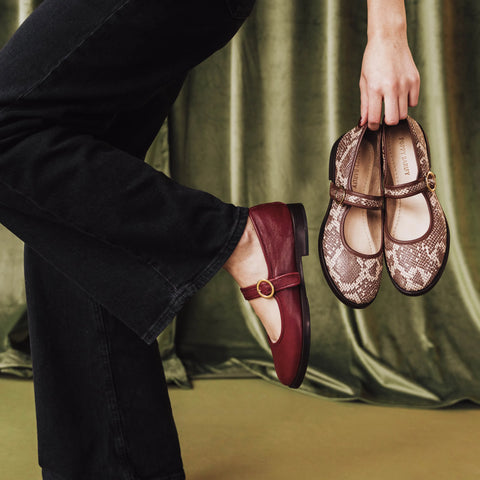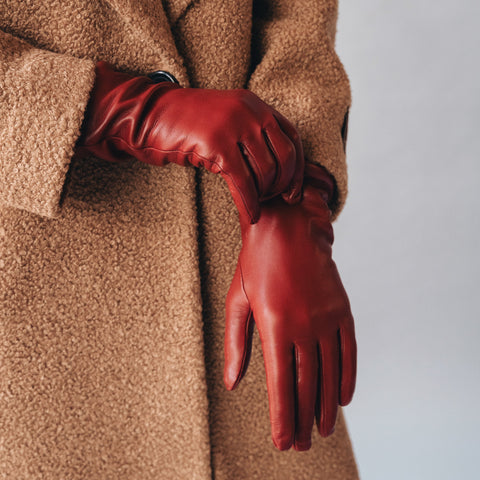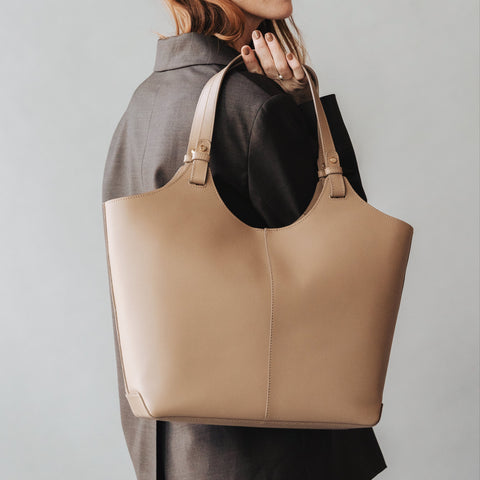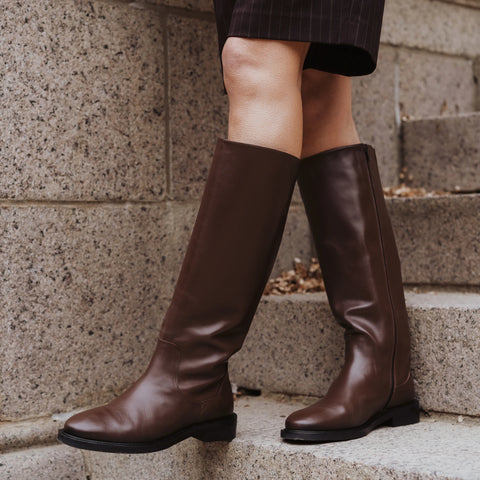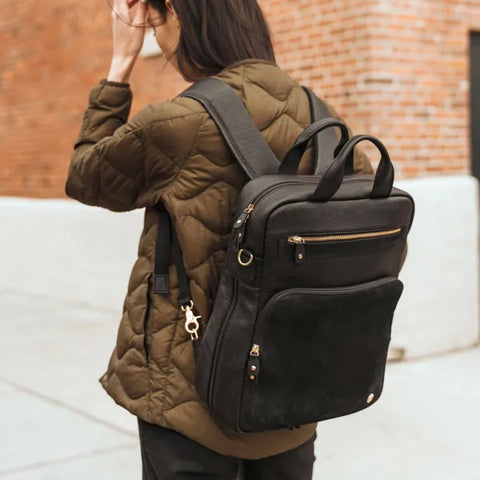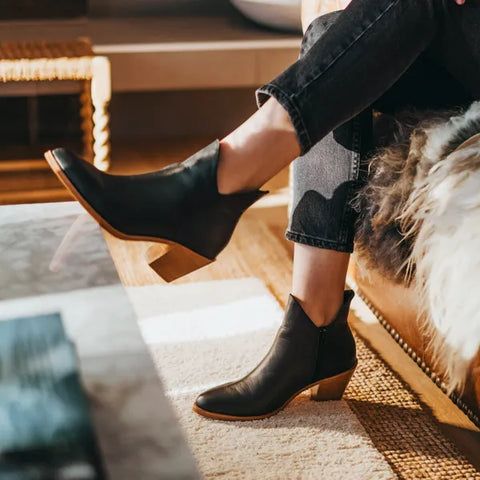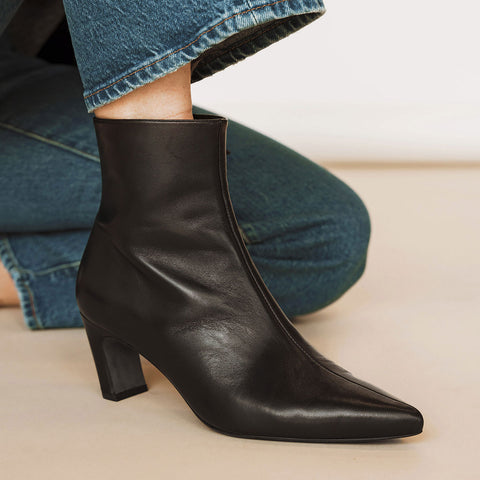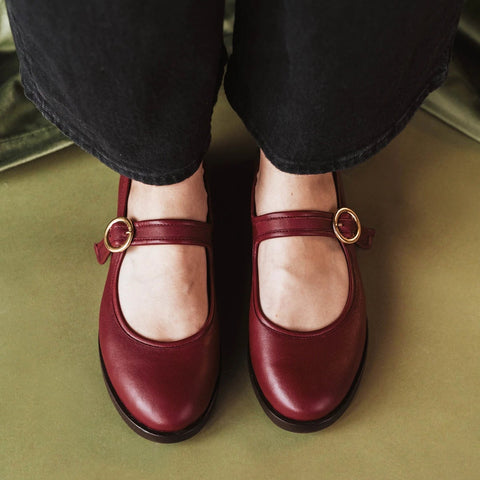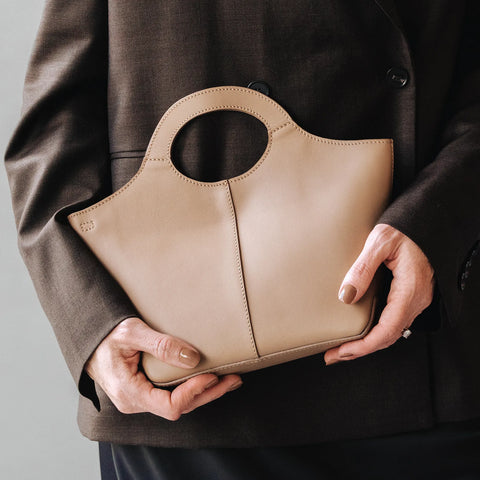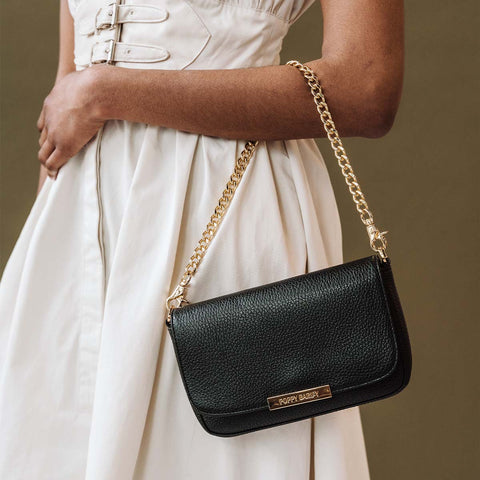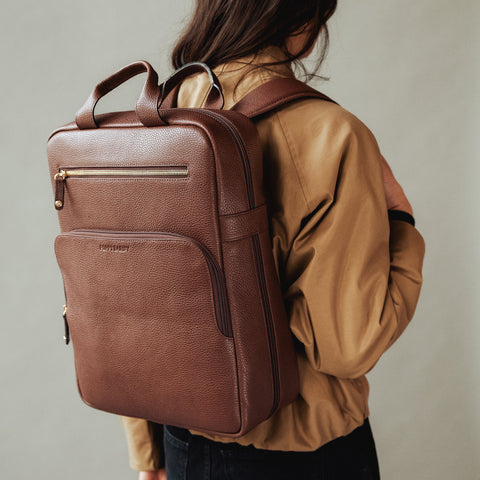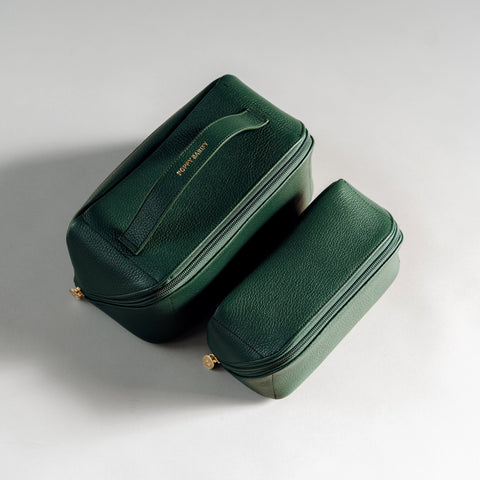In May 2012, when Kendall and I (Justine) traveled to Mexico to source a studio to make our shoes, we also went to ANPIC, which is a huge fair for shoe components; picture entire booths dedicated to a single component like shoes laces, interlining, insoles and, of course, leather. It was one of the most random things we’ve ever done: after a promising meeting with one of the tanneries, Kendall went to the bank machine and withdrew enough cash to buy the hides of two cows and one goat - on the spot.
As they say, it was the start of something beautiful.
Just like with food, at least 50% of a great end product comes from the quality of the ingredients being inputted. The primary reason why
Poppy Barley shoes are so comfortable is the quality of the leather – so we owe our tannery a lot of credit. They are also a lovely Italian family we enjoy visiting each trip to León.
Recently, our Operations Manager,
Laura, sat down with Enrico, the patriarch of the family, to learn what he loves about making leather, how some of our crazy leathers get made (
Metallic Gold?) and a little about his story.

Laura: In 1999 you moved from Italy to Mexico – why?
Enrico: I first came by myself to México. They offered me a temporary job here, and I stayed. We had the tannery in Italy, but a big tannery in Monterrey (México) hired me to work on a goat development that was targeted to be exported to Italy. So, I came. At first for 4 months, then the job was extended for some more time.
I could foresee a lot of business opportunities in México, I did a lot of research on the business environment and I decided to move here. At first I moved by myself. I left my family in Italy. I started importing chemical products for the tanning industry from Italy. Then my sons came and the next logical step seemed to be start a tannery in Monterrey ourselves. We found out about León being the capital city of the leather tanning industry in México and we moved here.
I arrived in Monterrey in 1999. My sons and I arrived in León in 2004 and Grazia (wife) came in 2008 because we had a business in Italy that she had to take care of. She also stayed because our parents were old and needed to be taken care of. Now, all of our friends are there, old friends that we made 50 years ago. We also have friends in León, but they are new friends.
We used to go visit twice a year, but now we only go once a year, the euro is very expensive now (laughs).
You operate a family business—what role does each family member play in the business?
I am the administrator, because I am the oldest. Grazia, my wife helps me. My son Cesar is the production manager and my other son Victorio is our sales manager.

What is your favorite part of owning a tannery?
To be a tanner, one needs a lot of passion because the leather process is very complicated. There are different problems every day because we work with live supplies, it is not a fabric or plastic roll that is the same everyday, it is full of imperfections and has a different reaction with every step of the process. A slight temperature change, a little ph change and things can go really wrong. Another important factor is the origin of leather, because if leather is dry, or animals eat less or a different kind of food, we can get a different reaction to the same process. Leather is always different. Every little step of the way has to be supervised to make sure everything is as it should be.
I love it, my father taught me. I learned it all with him. The leather process is an art, a lot of patience is needed. It is really fun to see the change from a raw skin to our final product, with all the colours, the different finishes. It is a great job that makes me feel so satisfied… It surprises me that we can do such a good thing!
How do you plan the leathers you create for your collections?
The good thing about us is that we work together with our chemical product house in Italy. This enterprise is very much into the fashion industry and it helps us anticipate seasons and trends. We can access to fashion colors and finishing at least one and a half to two years before fashion actually comes. When we know this, we are able to develop new products for the next seasons.
Can you walk through all the steps required to make leather?
We begin with raw skins, although not all tanneries begin the same way. Some tanneries begin their processes with wet blue leather that is a step forwarder. We always begin with raw leather to be able to supervise each step and tan it according to our quality standards. If leather is raw, the first step is to wash the skins to make skins absorb as much water as possible and get as fluffy too. Then we remove the hair. After that, we add acids and chrome to destroy those parts of leather that are not useful, so leather is soft. Here we change the ph to make leather elastic too. Now we have wet blue leather. This is the most difficult and delicate part, if anything goes wrong, we can get loose and wrinkle leather. That is why we prefer to do it ourselves, to make sure that we get the perfect leather. After that we do the tanning, dyeing and waxing, depending on the kind of finish. The whole process takes 15 days at the very least.

Do you raise your own cows?
No, all we do is bought from suppliers, from slaughterhouses. When leather arrives, it is checked, and if it OK, we buy it, if it is not, we don't receive it. The meat of these cows is used for human consumption and leather is a sub product. Many years ago, leather was lost because it was very cheap and wasn't used. Now we have given it a value and bettered the quality of leather and finished leathers.
In terms of leather production, are Mexican cows different than Italian cows?
No, cows are cows, the same everywhere. Half of the cows we buy are Mexican and the other half from the US depending of the quality available in the market compared to the prices they have. We used to buy more from the United States and less from Mexico, but with the years, national production has bettered a lot and now we buy about 50/50.
Are they cows from León?
No, they are from Torreón, Chihuahua, in general from the North.
Any From Italy?
No, Italy doesn't produce or sell cows or raw leather. All cows are imported from Africa, Brazil, France, Russia and Holland into Italy.
How to you make nubuck compared to suede?
They are different because when you make full grain leather, you can see the pore, its characteristic of it. Nobuck is also full grain but it is polished to remove the upper part of the leather, and that gives it a characteristic of very soft hair that gives the effect of dark/light when touched.
And suede?
When we begin process, before split, cow hides are about 3.5 mm thickness. It can then be split in two or three layers then. The upper layer of leather is full grain and the second and third layers are suede. That is why suede is cheaper, the lower layers of hides are not as resistant and are a lot less uniform, this is you can see the cow veins on them.

How do you make leather like the gold leather, the metallic lizard etc?
We use foils. We apply a thin coat of a special glue on leather and then we press foils on finished leather. We use a lot of heat and a lot of pressure.
What are the differences between high and low quality leathers?
The difference is the leather cleanliness. The high quality leather has no spots, stains or defects, with a good grain, without holes without disease defects, with good leather conservation. Low quality leather has a plastic-y look and feeling. It is covered with plastic coat to cover defects and that makes leather more resistant to scratches too.
What are the key steps to producing great leather? My father used to say that 50% of the process is done if the raw leather is in good condition. Another important thing is a good technician (in this case César, my son).
Third, good chemical products.
Finally, modern machinery.
What can people do to identify if a leather is high quality?
It is not easy, it takes a little experience. Most people don't know how to distinguish one from the other. The appearance, touch, finish needs to be fine, must be natural. Cheaper leather is normally plasticky, you can see it covered by a plastic coat. It feels fake. Pores can't be seen.
The first, definite rule is:
SHOES CAN'T BE CHEAP. If you pay little money for your shoes, then definitely, it is not made with good leather. Good leather is expensive and one needs to pay the price. It can't be cheap, it just can't. (Enrico laughs hard.)




